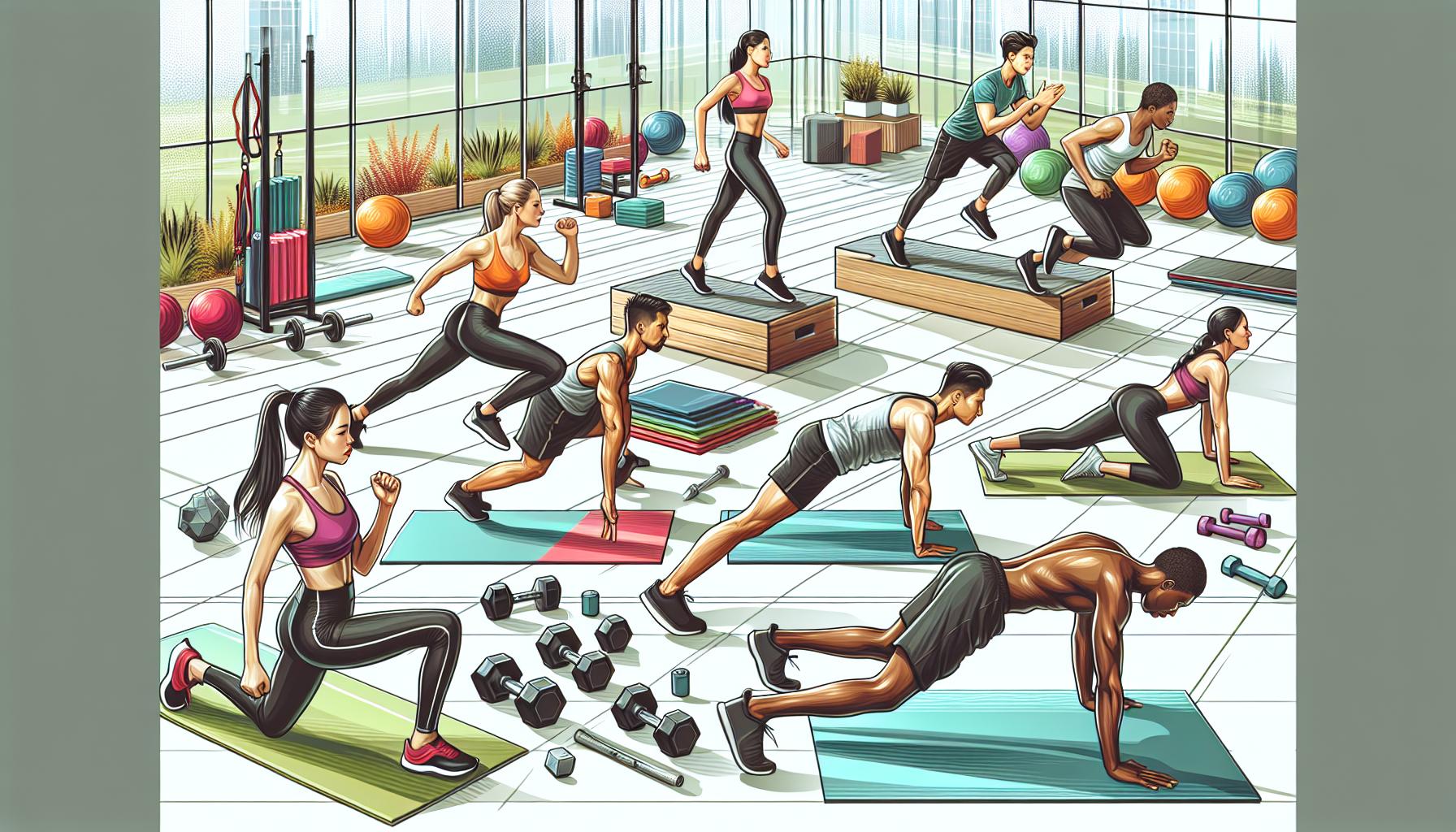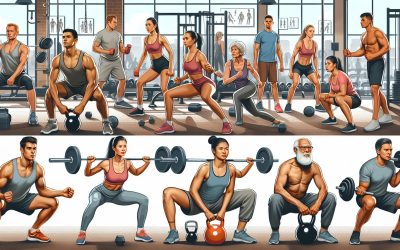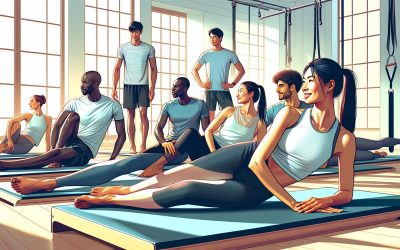In today’s fast-paced world, finding time to hit the gym can feel like a Herculean task. But what if the gym could come to you? Bodyweight workouts offer just that—a gym-free solution to staying fit, no matter where you are or how packed your schedule is.
They’re the ultimate in convenience and accessibility, requiring nothing more than your own body and a little bit of space. Whether you’re in a hotel room, at the park, or even in your tiny living room, bodyweight exercises can be tailored to fit.
So, if you’ve ever felt too busy to maintain a workout routine, bodyweight exercises might just be the game-changer you need. Let’s dive into how you can leverage these exercises to stay fit anytime, anywhere.
Benefits of Bodyweight Workouts
Bodyweight workouts aren’t just versatile; they’re packed with a myriad of health and fitness benefits that cater to enthusiasts of all levels. From beginners to advanced athletes, these exercises harness one’s own body weight to strengthen muscles, increase flexibility, and boost cardiovascular health.
Cost-Effective and Convenient
One of the standout advantages of bodyweight exercises is their cost-effectiveness. You don’t need a gym membership or expensive equipment to get started. Whether it’s push-ups, squats, or lunges, these exercises can be performed anywhere, from the comfort of your living room to a local park. This accessibility makes maintaining a regular fitness regime less of a financial burden and more of an achievable lifestyle choice.
Improves Strength and Endurance
Bodyweight training goes beyond basic fitness. It significantly improves muscular strength and endurance. By regularly engaging in these exercises, individuals can see substantial improvements in their ability to perform daily activities with greater ease. The adaptability of bodyweight training also means that exercises can be modified to increase or decrease intensity, making it suitable for everyone, regardless of their fitness level.
Enhances Core Stability and Flexibility
A strong core is crucial for overall body strength and stability. Bodyweight exercises such as planks and bridges target multiple core muscles, promoting better posture and reducing the risk of back pain. Moreover, incorporating movements like stretches and yoga into a bodyweight routine can enhance flexibility, which is vital for a well-rounded fitness regimen and injury prevention.
Promotes Mental Well-being
Besides the physical benefits, bodyweight workouts offer significant mental health perks. Engaging in regular physical activity has been shown to reduce symptoms of depression and anxiety. The act of focusing on movement and breath during exercises like yoga can also encourage mindfulness, leading to improved mood and reduced stress levels.
Accessible to All Ages and Fitness Levels
Bodyweight training is uniquely inclusive. Exercises can be easily modified to cater to different age groups, physical abilities, and fitness levels, making it an appealing option for families to engage in together. From children to seniors, bodyweight workouts can be adapted to ensure everyone achieves a beneficial and safe workout.
Bodyweight workouts offer a flexible, effective, and inclusive way to achieve fitness goals. Whether it’s improving strength and flexibility, enhancing mental health, or simply establishing a more active lifestyle, the benefits of incorporating bodyweight exercises into one’s routine are extensive and varied.
Key Bodyweight Exercises to Know
When diving into the world of bodyweight workouts, understanding the key exercises that form the foundation of most routines is essential. These exercises not only provide a comprehensive workout for various muscle groups but also ensure that individuals can execute them correctly for maximum benefit. Here’s a look at some of the cornerstone bodyweight exercises everyone should know.
Push-Ups
Push-ups are a quintessential exercise targeting the upper body, including the chest, shoulders, and triceps. They also engage the core and lower back when performed with the correct form. Variations such as wide-arm, diamond, and incline push-ups can help focus on different muscle groups and prevent workout monotony.
Squats
Squats are fundamental for strengthening the lower body, focusing on the quads, hamstrings, glutes, and calves. They also enhance core stability and balance. Squat variations, like jump squats and single-leg squats, add intensity and challenge to the routine.
Planks
Planks are the powerhouse of core conditioning, engaging not just the abdominal muscles but also the shoulders, chest, and back. Holding a plank position builds endurance and strength throughout the body. Side planks and plank jacks are effective variations for targeting different muscle groups and adding cardio elements.
Lunges
Lunges are key for lower body strength, working on the quads, hamstrings, and glutes. They also improve balance and flexibility. Forward, backward, and side lunges are great variations to target muscles from different angles and increase the challenge.
Burpees
Burpees are a high-intensity exercise that combines squats, jumps, and push-ups. They’re effective for full-body conditioning and improving cardiovascular health. Burpees are known for their ability to boost endurance and burn calories quickly.
- Cost-Effective: No need for expensive equipment or gym memberships.
- Convenience: Can be performed anywhere, anytime.
- Versatility: Suitable for all fitness levels with easy modifications.
| Exercise | Primary Muscles Worked | Benefits |
|---|---|---|
| Push-Ups | Chest, Shoulders, Triceps | Strengthens upper body |
| Squats | Quads, Hamstrings, Glutes | Enhances lower body and core |
| Planks | Core, Shoulders, Back | Builds endurance and stability |
Designing a Bodyweight Workout Routine
Creating a personalized bodyweight workout routine comes down to understanding one’s fitness goals, available time, and current physical condition. Whether the aim is to build muscle, shed pounds, or enhance overall health, a well-rounded regimen can be crafted to meet these targets efficiently.
Starting with the Basics
For beginners, it’s crucial to focus on mastering the form of foundational exercises like push-ups, squats, planks, lunges, and burpees. These movements target multiple muscle groups and lay the groundwork for a strong, balanced physique. Initially, workouts may consist of two to three sets of 8-12 repetitions for each exercise. As strength and endurance improve, individuals can increase both the volume and intensity of their workouts.
Variability for Progression
Introducing variations of the basic exercises prevents boredom and ensures continuous progression. For instance, transitioning from regular push-ups to diamond push-ups can challenge the muscles differently and stimulate growth. Similarly, adding jump squats instead of regular squats can introduce a cardiovascular element to the strength workout.
- Progression Examples:
- Push-ups to diamond push-ups
- Squats to jump squats
- Planks to side planks
Through incorporating variations, participants not only keep their routines fresh but also tackle plateaus by continuously challenging their bodies in new ways.
Frequency and Duration
The ideal frequency of bodyweight workouts varies based on individual goals and recovery needs. A general recommendation is to aim for three to five sessions per week, allowing for rest or lighter activity on off days. Each session should last between 30 to 60 minutes, depending on the intensity and the exercises included. Structuring workouts with adequate rest between sets and exercises is crucial for maximizing performance and preventing injury.
Sample Weekly Schedule
To provide a balanced approach to fitness, a sample week might look like this:
- Monday: Full-body routine
- Tuesday: Active recovery (yoga or light stretching)
- Wednesday: Lower body focus
- Thursday: Rest or gentle mobility work
- Friday: Upper body and core emphasis
- Saturday: Cardio-based bodyweight exercises
- Sunday: Rest
This schedule ensures that various muscle groups are targeted throughout the week, with sufficient time for recovery and growth. Remember, consistency is key. Even without access to gym equipment, bodyweight exercises offer a powerful way to achieve and maintain fitness, anywhere and anytime.
Tips for Maximizing Results with Bodyweight Workouts
Achieving remarkable results from bodyweight workouts isn’t just about going through the motions; it’s about doing them with intention and smart strategies. Here are some essential tips to enhance the effectiveness of your bodyweight training regimen.
Focus on Form and Technique
Before ramping up intensity or volume, it’s crucial to master the form and technique of each exercise. Poor form not only hampers progress but also increases the risk of injury. Whether it’s a squat or a push-up, ensuring that every movement is performed correctly can significantly boost the effectiveness of the workout. Beginners should consider recording themselves or working with a trainer to get feedback on their form.
Incorporate Progressive Overload
The principle of progressive overload is vital for continuous improvement. This doesn’t necessarily mean increasing reps alone; it also involves enhancing the exercises’ difficulty. For instance, transitioning from a standard push-up to a one-arm push-up can provide the necessary challenge to stimulate muscle growth and strength gains.
Mix in High-Intensity Interval Training (HIIT)
Integrating HIIT with bodyweight exercises can skyrocket fitness levels and fat loss. Alternating between intense bursts of activity and fixed periods of less-intense recovery or complete rest keeps the heart rate up and burns more calories in less time. A simple routine might involve 30 seconds of all-out jump squats followed by 30 seconds of rest, repeated for 15-20 minutes.
Ensure Proper Recovery
Recovery is as vital as the workout itself. Muscles need time to repair and strengthen after being stressed during exercise. Incorporate rest days into your weekly routine and consider practices like stretching, yoga, or foam rolling to aid in recovery and flexibility.
Stay Consistent
Perhaps the most critical aspect of maximizing results with bodyweight workouts is consistency. Results won’t appear overnight, and sticking to a routine is key. Set realistic goals and gradually increase the workout’s difficulty to maintain motivation and prevent plateauing.
Track Progress
Keeping track of workouts and progress can serve as a powerful motivator. Whether it’s through a fitness app or a simple notebook, noting down the exercises, sets, reps, and any variations introduces accountability and can highlight improvements over time.
Bodyweight Workouts for Different Fitness Levels
Bodyweight workouts are incredibly versatile. They are not restricted by one’s current fitness level or access to equipment, making them an excellent choice for exercising anytime, anywhere. Whether someone is just starting on their fitness journey, or they’re an experienced athlete, there’s a bodyweight routine that can challenge and benefit them.
Beginners: Building a Solid Foundation
For those new to fitness, the key is to start simple and focus on form. Beginners should aim for basic exercises that build strength and endurance gradually. Here are a few examples:
- Push-ups (modified if necessary)
- Bodyweight squats
- Planks
- Lunges
Starting with these fundamentals allows new exercisers to focus on their technique, reducing the risk of injury and setting a strong foundation for more challenging workouts down the line.
Intermediate: Upping the Ante
Once comfortable with the basics, it’s time to increase the difficulty. This can be done by adding more reps, increasing the speed at which exercises are performed, or introducing more complex movements. Intermediate routines often include:
- Standard push-ups
- Squats with jumps
- Side planks
- Lunges with twists
Adding these variations helps build muscle, improves coordination, and increases heart rate for more effective fat burning.
Advanced: Mastering Bodyweight Training
For those who have mastered intermediate routines, advanced bodyweight exercises provide a new challenge. These exercises often require greater strength, flexibility, and balance. Here’s what advanced practitioners might incorporate:
- One-arm push-ups
- Pistol squats
- Handstand push-ups
- Advanced plyometrics
Incorporating these high-intensity movements pushes the boundaries of what’s possible with bodyweight training, leading to impressive gains in strength, agility, and overall fitness.
Adapting Workouts to Individual Needs
Regardless of fitness level, it’s crucial to listen to the body and adapt workouts accordingly. Those recovering from injuries or with specific limitations can modify exercises to meet their needs without sacrificing progress. Similarly, adding or reducing rest periods between exercises allows for customization based on individual endurance levels.
By understanding and applying these principles, exercisers can create effective and challenging bodyweight routines tailored to their fitness journey.
Conclusion
Embracing bodyweight workouts unlocks the freedom to exercise anywhere and at any time, breaking the barriers of gym availability or equipment access. They offer a scalable path for everyone, from beginners taking their first fitness steps to advanced athletes seeking to push their limits. By adapting exercises to meet personal goals and challenges, individuals can craft a fitness routine that not only fits into their lifestyle but also evolves with them. So, whether it’s in a cramped hotel room or the local park, the power to transform and maintain one’s physical health is literally in their own hands. Let’s make the most of this versatile, accessible form of exercise and see where our fitness journey takes us.
Elizabeth Redd: I am a passionate advocate for Health and Healing, dedicated to empowering individuals to live their best lives.
As the founder and publisher of Health and Healing, I have established myself as a guiding force in the wellness industry.
I am committed to providing the latest research, holistic approaches, and inspiring stories to open new possibilities for your health and healing journey.
Learn more about Elizabeth and Join Us at Health and Healing. Also, check out My About Page.





0 Comments